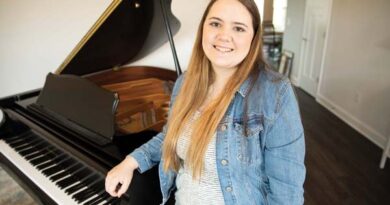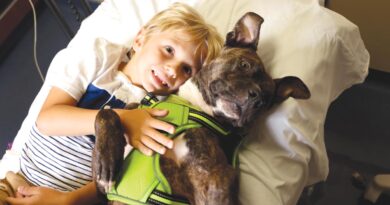Our Stories
Published on January 24th, 2024 by Christina Echegaray.
During the 20-year history of Monroe Carell Jr. Children’s Hospital at Vanderbilt, the hospital has provided compassionate, comprehensive medical and surgical care to countless children and their families. With 31 pediatric and surgical specialties, our more than 500 physicians and surgeons have cared for children with everything from broken bones to those who need complex medical care, including heart disorders and cancer. Many of the 11 patient stories featured here are patients you’ve “met” before in Hope magazine stories over the years. Here, we update you on where they are now and how, for many, Monroe Carell is still “like home.”
Rice quadruplets
PREMATURITY
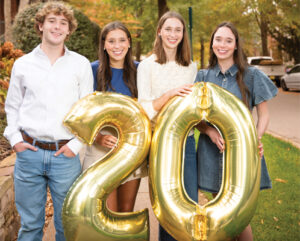
This fall when the Rice quadruplets leave for college, the Rice household will be very quiet, something that Ann Rice and her husband, Chuck, both dread and celebrate.
Eighteen years ago, on Oct. 17, 2005, Charles Shepherd (Shep), Elizabeth, Laura Frances (Franny), and Mary Carter Rice entered the world too soon, each weighing less than 2 pounds and fighting for their lives. Their parents’ hope that they all might one day be healthy young adults ready to spread their wings in college was just a whispered prayer.
They were born at 26 weeks, barely over halfway through the normal 40-week pregnancy gestation period. After birth, the babies endured infections, kidney failure, underdeveloped lungs, feeding issues and heart surgery. “Mary Carter was definitely the sickest child. We were told she would probably never come home,” Ann said.
The staff in the Neonatal Intensive Care Unit (NICU) at Monroe Carell Jr. Children’s Hospital at Vanderbilt did everything they could to ensure the quadruplets would survive.
“Overall, their health today is fantastic,” Ann said, adding that they have each had some surmountable health challenges along the way. Their greatest challenge right now is making a final decision on which colleges to attend. Ann and Chuck have encouraged the girls to attend different colleges so they can grow individually.
“I was talking to a friend recently (about the quadruplets leaving for college at the same time),” Ann said. “She really put it into perspective. She said, ‘You know, Ann, we have to give thanks for the fact they are able to go to college.’ And I thought, ‘Yes, you’re exactly right.’ It took that moment for me to remember that our path could have been very, very different,” she said.
“They were born at 26 weeks, functioning as 24 weeks. They were sick and fought for every breath. The doctors and nurses at Monroe Carell worked around the clock to save my life and theirs. We could have four children in wheelchairs, the effects of cerebral palsy, all the things. It’s not lost on me that things could have turned out very different.”
Instead, all four are active in their church and youth group, have been on numerous mission trips, have jobs, and have very individual personalities.
Shep is the athlete of the family. He plays soccer at his high school and competitive soccer. He is choosing between the University of Mississippi and the University of Tennessee for college. He has a large group of friends and good grades, Ann said.
Elizabeth will more than likely attend the University of Kentucky in the fall. She’s social, but also “a homebody. She works summers as a lifeguard and enjoys being home with her siblings,” Ann said.
Franny, who remained in the NICU for four months after birth, is the quietest and most inquisitive of the bunch and is very active in community service. “She’s always concerned about world events,” Ann said. She plays on the varsity bowling team at her school and is leaning toward attending the University of North Alabama. She and Mary Carter both had surgery to repair congenital heart defects (patent ductus arteriosus), and they suffered some hearing loss and vocal cord paralysis as a result of the surgery. Franny has had several eardrum and vocal cord reconstructions.
Mary Carter, who weighed only 510 grams at birth (1.1 pounds) and stayed in the NICU for five months after she was born, is the most social of the four and plans to attend either University of Tennessee Martin or Western Kentucky University. She lifeguards during the summer. Both she and Franny are “full of grit” and work hard to make good grades. “They dig and dig until they get it right,” Ann said.
Both Mary Carter and Franny have been shaped by their many experiences as patients at Monroe Carell. They want to become child life specialists. “After enduring more surgeries after they became older, they always felt connected and very intrigued by the (young women) that would come around and talk to them before surgery.”
On the night before their 18th birthday, Elizabeth became a little emotional and told her mom it could be the last time they celebrated their birthday together at home since they will be away in separate colleges.
“Things will definitely be different, especially birthdays,” said Ann.
– by Nancy Humphrey
Janelly Martinez-Amador
Hypophosphatasia
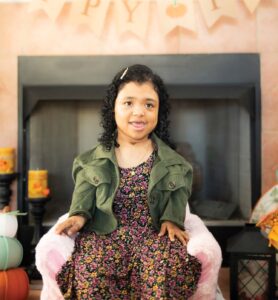
Janelly Martinez-Amador captured hearts and headlines around the world when her story — first published 11 years ago — told about a rare metabolic disorder that left her with no bones and unable to move or lift an arm or her head as an infant. X-rays of her body early in life revealed only dark shadows where bone should exist — until a drug therapy trial became available to her at Monroe Carell Jr. Children’s Hospital at Vanderbilt.
“I am so grateful for the doctors and the staff. They have always been there and attentive for Janelly. I will always be eternally grateful for them and eternally grateful to God for putting them in our lives,” said Janelly’s mom, Janet Amador, in a recent interview.
Born with a genetic disorder called hypophosphatasia (HPP), a metabolic disease that affects the development of bone and teeth, Janelly’s body was unable to make bone. An enzyme deficiency causes the bones to become soft because they can’t absorb important minerals such as calcium and phosphorus, increasing the risks for pain, broken bones and bone deterioration.
While there are varying degrees of severity, the most severe forms of HPP occur before birth and early infancy and are thought to affect about 1 in 100,000 babies born in the United States. Prior to the development of enzyme replacement therapy, more than half of babies born with the disease did not survive beyond their first birthdays. Now, there is an estimated 85% survival rate for these infants at five years while on therapy.
Under the care of Jill Simmons, MD, a pediatric endocrinologist, Janelly entered a clinical trial that gave her family hope. As a leading pediatric research institution, Monroe Carell physician-scientists work to find therapies that improve outcomes for patients like Janelly.
At 18 months old, Janelly was one of 11 children, age 3 years and younger, to participate in a clinical trial to receive an enzyme-replacement drug therapy, asfotase alfa, for the life-threatening form of HPP. She had the worst case of the group.
About eight months into the treatment, Janelly’s parents felt her fingers — which had been soft and boneless — and they could feel traces of developing bone. Her head also began to develop bone. At 18 months into therapy, X-rays showed, for the first time, the visible development of her rib cage. The drug was approved in 2015 by the FDA.
Janelly was 7 when she became an inspiration for children and adults worldwide suffering from different forms of HPP, and her story created an awareness about the expertise and comprehensive care that pediatric and adult physicians at Vanderbilt University Medical Center (VUMC) and Monroe Carell provide for the disorder.
Simmons, along with Kathryn Dahir, MD, an adult endocrinologist at VUMC, run a comprehensive, multidisciplinary clinic with more than 200 patients from across the U.S., which is among the largest HPP cohorts in the country.
Now 17, Janelly is no longer respirator dependent. She attends the Harris-Hillman Special Education School in Nashville, and she enjoys spending time surrounded by her family.
Janelly has appointments with Simmons about every six months and with her pediatrician annually for well visits.
“Janelly is still receiving the treatment, and it truly was lifesaving for her,” Simmons said.
The treatments at Monroe Carell changed life for the Martinez-Amador family. “She used to have to be with the respirator 100% of the time, and we would constantly have to be by her side. Now, for her and for ourselves, we have a more normal way of being,” Janet Amador said.
At Monroe Carell/VUMC, Simmons and Dahir continue to be part of an international study evaluating the natural history of HPP as well as the long-term effects of its treatment.
Simmons’ words in 2013 still ring true today for Janelly and other patients like her:
“This is why we get into medicine in the first place: to truly make a difference in the life of a child,” Simmons said. “My goodness, to go from no bones to bones. That’s the most impressive thing I have seen as a physician. It’s incredible.”
– by Christina Echegaray
Jurnee Scantling
ACUTE LYMPHOBLASTIC LEUKEMIA
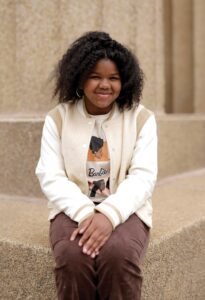
In June 2015, when she was two and a half, Jurnee Scantling was diagnosed with acute lymphoblastic leukemia (ALL), the most common childhood cancer. Jurnee’s treatment at Monroe Carell Jr. Children’s Hospital at Vanderbilt started immediately with a 37-day inpatient stay and would continue for the next two years.
It was a stressful and frightening time that her mother, Erika Scantling, will never forget. Jurnee, however, does not remember it.
Now 11 years old, the preteen has no recollection of chemotherapy, surgery or even her Make a Wish® trip to Disney World. She is a thriving fifth grader who enjoys dancing, particularly to TikTok videos, and gymnastics.
“She has picked up drawing and is actually pretty good. She can look at something and freehand draw it,” Erika said.
When Jurnee was diagnosed with ALL, the toddler was eligible for a trial that was testing a new therapy. The trial compared a new treatment to the standard of care. Jurnee’s treatment started with “induction” chemotherapy, a high-dose treatment administered in the hospital and aimed at putting the disease into remission.
“It was hard to hear the diagnosis, but I knew something was wrong months in advance,” recalls Erika, who is a licensed practical nurse. Despite having recently given birth to her fourth child, she spent every night in the hospital with Jurnee when she was diagnosed.
Inpatient stays and oncology clinic visits are behind them now. Jurnee has yearly checkups at the Childhood Cancer Survivorship Clinic. Afterward, she and Erika will occasionally walk across the street to Monroe Carell to visit with the hematology/oncology nurses who cared for them.
“She’s been doing well healthwise. To look at her you’d never know anything was wrong,” Erika said. “Sometimes chemo has adverse effects on short-term memory, and she’d been having issues with this, especially with reading. She no longer needs extra support with that, though.”
Vanderbilt’s program is the only childhood cancer program in the state that has all the subspecialties needed to support children who are receiving cancer therapy under one roof. Active collaboration with the Vanderbilt-Ingram Cancer Center also brings special expertise to the care of children with cancer, and the pediatric oncology program is the only program in the state that is part of a National Cancer Institute-designated Comprehensive Cancer Center that treats children and adults.
“She is a typical preteen. She likes her own space now,” Erika says of her daughter. “She’s very friendly and doesn’t meet a stranger. She’s carefree.
“About a year and a half ago she asked me, ‘What happens to your body when you die? And when do you get to come back?’ I had to explain to her what death was. I don’t think she realized until that point how serious what she had could have been. She didn’t like to tell people she had cancer; she was embarrassed. And I told her, ‘You have a story to tell; you have a journey to tell people about. Your name matches your story.’”
– by Kathy Whitney
Callie Gill
Scoliosis
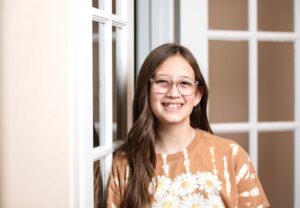
In March 2023, Callie Gill, 12, became the first patient in the state of Tennessee to undergo an innovative procedure using her own growth to correct one of two spinal curvatures from scoliosis.
Surgeons at Monroe Carell Jr. Children’s Hospital at Vanderbilt performed the minimally invasive surgery, called Vertebral Body Tethering, to allow the sixth grader the best chance of mobility and flexibility as she aged.
In Callie’s case, she had two curvatures — thoracic (upper spine) and lumbar (lower back).
A thoracic spine fusion was performed to join the bones in the upper back to eliminate movement between them. It was followed by the tethering surgical procedure of the lumbar curve.
“Tethering is a nonfusion option to treat scoliosis that essentially works like an internal brace,” said Craig Louer, MD, assistant professor of Orthopaedic Surgery at Monroe Carell. “It is approved for patients with a significant amount of growth remaining. The tether is a strong, flexible cord which modulates growth of the spine to gradually correct a curve. This is what straightens out the spine but maintains flexibility.”
Tethering is different from fusion treatment in that it allows the spine to bend and flex. With fusion surgery, the vertebrae are fused together, not allowing any movement due to the metal rods placed along the spine.
Callie’s family is thrilled with the success of her surgery.
“We are so glad we chose the tethering option,” said Crystal Gill, Callie’s mother. “It is allowing her to function as a normal 12-year-old. That is the main reason we decided to move forward with this procedure.
“It was very important that Callie be able to have free movement and the ability to bend. If she had the fusion on the lower spine, she wouldn’t have the mobility.
“We are just so pleased, and everyone was phenomenal, friendly and incredibly informative about the process and answered all of our questions,” she added.
Each year, nearly 200 patients receive surgical treatment for scoliosis at Monroe Carell.
Considered a common condition, scoliosis affects 6 million to 9 million people in the United States and is typically treated with external bracing or spinal fusion surgery.
Louer and his team expect that 20%-30% of the clinic’s patient population will be candidates for this surgical option. Tethering surgery candidates must have a curvature of more than 45 degrees.
“Callie is doing fantastic,” said Louer. “She has met all the goals, and she continues to progress. The tethering is maintaining the correction that she needed.”
Teams at Monroe Carell began intensive training in 2021 to prepare for the launch of the cutting-edge curvature correction procedure, which was FDA approved in 2019.
The surgical team is composed of Louer, Gregory Mencio, MD, who holds the Neil Green, MD, Chair of Pediatric Orthopaedics, and Jeffrey Martus, MD, professor of Orthopaedic Surgery.
– by Jessica Pasley
Zion Horton
PRIMARY CILIARY DYSKINESIA
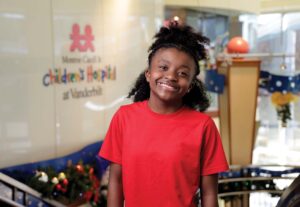
Since Zion Horton was a preschooler, her mom, Valency, has worked hard to instill in her daughter that primary ciliary dyskinesia (PCD) is what she has, not who she is.
“We’ve taught her to be her own advocate as well and to speak up for herself,” Valency said in a 2018 story on Zion (who was 5 years old at the time) that was published in Hope magazine.
Before she was born, Zion was diagnosed with PCD, an inherited rare disease that affects the cilia, the tiny, hairlike structures that line the airways, including nasal passages, sinuses, lungs, Eustachian tubes of the ear, the reproductive organs and ventricles of the brain.
Now an 11-year-old fifth grader, Zion has taken her mom’s advice to heart and is advocating for herself at medical appointments at Monroe Carell Jr. Children’s Hospital at Vanderbilt. Zion also has taken charge of her daily medications and breathing treatment. It’s crucial that she blow her nose thoroughly throughout the day — to help clear mucus. She wears a heavy airway clearance vest twice a day (before school and before dinner) and takes medication to keep her airway clear.
“When we go to her doctors’ appointments now, I can just sit back, and she can handle the conversation with her medical team. She understands everything. Now, when they ask her how this feels or how that feels, she doesn’t turn to me. She can answer by herself how she feels,” Valency said. “At home I don’t have to say, ‘It’s time to take your medications; to do your treatments.’ Zion will say, ‘Hey, I’m going to do my treatments.’ It’s taken the load off of me, but also, it’s made me proud to see her doing it on her own as well,” she said.
Michael O’Connor, MD, associate professor of Pediatrics in the Division of Allergy, Immunology and Pulmonary Medicine at Monroe Carell, said Zion is “continuing to thrive in our comprehensive PCD center with the help of her loving and dedicated family. Like all children with PCD, Zion has had her share of respiratory challenges, but she always handles everything in stride, focused on what she needs to do to get better. Every day she must do breathing treatments to help keep her airways clear. She shows tremendous dedication to her therapies for her age.”
PCD affects the lung’s ability to get rid of the normal things we breathe in every day and creates extra mucus in the lungs, putting those who have it at risk for repeated respiratory infections and pneumonia.
It can take a long time to get a diagnosis. Monroe Carell is one of a limited number of comprehensive PCD centers and one of only two centers in Tennessee that offers specialized nasal nitric oxide testing to diagnose PCD.
In addition to breathing difficulties, PCD can also lead to ear and sinus infections along with hearing and speech development issues. It affects between 1 in 10,000 and 30,000 births, but most children with PCD have a normal life span ahead of them. Ciliary activity is also responsible for organ placement in the developing embryo. A condition called situs inversus totalis occurs in about 50% of all PCD patients, including Zion, whose heart, stomach, liver and spleen are on the opposite side of the body from where they should be.
Zion is doing well. She was hospitalized with pneumonia for two weeks in October 2022, and it was hard on her not being with her sister, Nia, but Nia was able to visit, and they spent time together in one of Monroe Carell’s activity rooms, Valency said.
“Schoolwise, she’s doing great academically,” Valency said. Zion received her school’s “Little Hawk Award” the past two years, determined by teachers, principals and the administration who vote on top students who embody the school’s motto, have character, and are on the A/B honor roll. “We are really proud of her.”
– by Nancy Humphrey
Carter Ray
ESOPHAGEAL ATRESIA
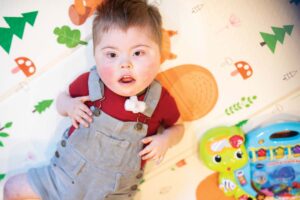
Carter Ray, 4, plays on his tummy and has earned the nickname roly-poly as he rolls all over the playroom at home.
“We can now see what can be possible for the future — sitting, standing, attending preschool,” said his mom, Lacey Ray. “None of this was possible before.”
When Carter was born on Nov. 3, 2019, Lacey and her husband, Chris, were focused on saving their son’s life.
He was born with a very rare form of esophageal atresia (EA), transesophageal fistula (TEF) Type B and tracheobronchomalacia, conditions that ultimately required reconstruction of the esophagus to allow secretions and nutrients to reach Carter’s stomach.
A new innovative and potentially lifesaving minimally invasive procedure offered the Ray family hope. Carter became the first patient in the United States to have this procedure, which was performed at Monroe Carell Jr. Children’s Hospital at Vanderbilt, where Carter spent the first 18 months of his life.
The complexity of his case required the specialized care of a comprehensive, multidisciplinary surgical team at Monroe Carell, led by Irving Zamora, MD, MPH, assistant professor of Pediatric Surgery and director of Advanced Minimally Invasive Surgery, who put together a team of experts including surgery partners Harold Lovvorn, MD, Nathan Novotny, MD, as well as ENT colleagues Christopher Wootten, MD, and Lyndy Wilcox, MD. Together they focused on repairing the esophagus and airway with the ultimate goal of getting Carter home.
And it worked.
After performing an anterior aortopexy and a thoracoscopic posterior tracheopexy to repair Carter’s airway, which collapsed when he breathed, the multidisciplinary team repaired the airway in a two-stage, minimally invasive approach several weeks apart.
With a Connect EA – Magnamosis device, the procedure used magnets to connect the two ends of a congenitally separated esophagus in patients with complex TEF/EA. Zamora collaborated with Michael Harrison and his team at University of California, San Francisco (creators of the magnet device) and Oliver Muensterer, MD, PhD, in Munich, Germany (the only other surgeon at the time to use the magnets).
Given the novel nature of this approach, the procedure required a compassionate use approval from the FDA. It was accomplished using minimally invasive techniques — the least intrusive pathway to performing a wide range of medical procedures and surgeries. This allows children to recuperate faster and with less pain.
On April 27, 2021, Carter was able to leave the hospital for the first time and join his family at their home in Lynchburg, Tennessee.
“He is doing fantastic,” Zamora said. “He is thriving. It’s just so awesome to see his development.
“We were able to accomplish the same goal using a minimally invasive technique that proved to be much better for the patient. It’s almost magic, right?”
Prior to the implementation of Magnamosis, a half-hour procedure, the operation to connect the esophagus took nearly four hours.
While Carter was the first of two published cases at Monroe Carell, there have now been a total of 10 cases performed in the U.S.
“He is making a lot of strides,” said Lacey. “He is getting stronger, building up stamina and getting into everything. “Dr. Zamora and this team gave him the best chance to be able to function, giving him a chance at living his best life. They saved his life,” she said. “We get to watch our boys grow up together. Seeing them be brothers is a really big deal. We are able to be a family and look toward the future.”
Carter has been cleared to begin feeding therapy and breathes on his own while awake, only requiring the use of a ventilator while asleep at night.
Zamora reflects on what his team accomplished:
“We gave this family hope, and that’s huge,” he said. “It also allowed us to provide this technique to others, providing more families an opportunity for future milestones. We are leading the way in the innovation of minimally invasive approaches and helping other institutions navigate this journey both nationally and internationally.”
– by Jessica Pasley
Maddie Wright
Cystic Fibrosis
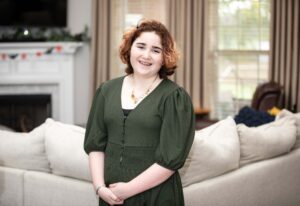
Maddie Wright is an active 16-year-old who does karate, volunteers with a horse therapy program for children with special needs, and loves playing with her emotional support dog, Quip. She’s thriving, and she credits her health care team at Monroe Carell Jr. Children’s Hospital at Vanderbilt.
“Monroe Carell means everything to me,” Maddie says. “Without them I wouldn’t be here. Literally. I wouldn’t have the opportunity to enjoy life — to be with my cousins, and my friends and my dog.”
Maddie, who lives in Murfreesboro, Tennessee, has cystic fibrosis, a genetic disorder that affects the lungs, liver, pancreas and many other organs. She was born 10 weeks early and spent three months in the Neonatal Intensive Care Unit at Monroe Carell. Chronic lung infections led to regular hospitalizations about four times per year throughout her childhood.
At age 4, Maddie was diagnosed with cystic fibrosis liver disease. Over time, she developed progressive liver scarring, eventually leading to liver cirrhosis. Maddie had a liver transplant in February 2021.
“She was in and out of the hospital all year after the transplant; it caused a lot of medical PTSD,” says her mother, Leanne Wright.
As Maddie reflects on the time she’s spent at Monroe Carell — much of it confined to her room to protect her from infectious diseases — she emphasizes the relationships she’s made with hospital staff.
“The doctors and nurses are amazing,” she says. “And the child life specialists have been so helpful to me. They’ve brought me things to do to keep me from focusing on the fact that I’m in the hospital sick and can’t leave, and they’ve kept me calm before anesthesia.
“And it’s not just doctors and nurses and child life, it’s the nutrition people and the cleaning people and the people in the gift shop and at Seacrest Studio who have all known me for so long. They’re family. Monroe Carell is a home away from home for me.”
Maddie has been serving as a patient ambassador for the hospital since she was 5. Her first big event was the Iroquois Steeplechase, one of Monroe Carell’s largest fundraisers. That was especially fun, she says, because she loves horses, and she got to meet the winning jockey, who gave her his trophy.
“I have it on my shelf to this day,” Maddie says.
She likes sharing her experience at Monroe Carell.
“In kids’ eyes, hospitals aren’t fun; they’re about needles and shots. I want to change the way that kids and other people look at it,” Maddie says. “A lot of us owe our lives to these hospitals, and I feel like the nurses and doctors and everyone else deserve to be seen for what they really do behind the scenes.”
“They know Maddie so well, which carries over into the mental health aspect of her care,” Leanne Wright says. “Things do get complex, and they’re able to do things to help minimize the stress of being in the hospital — like not wake her up for early morning vitals unless it’s necessary.”
Anita Pai, MD, assistant professor of Pediatrics and a liver transplant specialist, has been caring for Maddie since 2019.
“Maddie knows she’s not just a 16-year-old with cystic fibrosis in this room, but that we know her as Maddie — our animal lover, our fashionista, our empath,” Pai said. “It is important to appreciate these other facets of her personality and to understand what she values.
“Having a chronic medical condition takes a physical and emotional toll on our patients. I’m lucky to collaborate with an incredible team to optimize the care we provide to patients like Maddie. She knows that we value her as a person, which creates a safe space for her to share things that make her nervous or that are bothering her…she knows that we are going to do our best for her,” Pai said.
– by Leigh MacMillan
Zakia Onyekwere
Sickle CELL DISEASE

At age 3, Zakia Onyekwere may not have fully understood the genetic blood disorder that had caused her to spend so much time at Monroe Carell Jr. Children’s Hospital at Vanderbilt. But she was clear about the disease’s impact on her and her plans.
“My sickle cell doesn’t stop me,” she said in a story published in Hope magazine in 2011. “I want to be a medical doctor because I want to look for a cure for sickle cell.”
Zakia, now a poised 16-year-old junior in high school who loves and excels in biology, has the same — and even bigger — aspirations.
“My goal is to become a research doctor and to find a safe, accessible, successful cure for sickle cell disease. But not only sickle cell, I would like to research and find cures for other diseases to help people like me, and people in general,” she says.
Sickle cell disease occurs when a mutation is inherited in the gene for hemoglobin — the protein in red blood cells that carries oxygen. Instead of being flexible discs, red blood cells with abnormal forms of hemoglobin are hard, sticky and crescent-shaped, like the sickle farm tool. The cells die early, causing anemia, and they can get stuck in small blood vessels, causing pain, infection, stroke and other complications. Sickle cell disease affects about 100,000 Americans and is most common in people of sub-Saharan African descent, according to the Centers for Disease Control and Prevention.
Community support has helped advance the mission of the Sickle Cell Program at Monroe Carell to help patients like Zakia. This generosity includes a leadership gift that the Junior League of Nashville made in 2012 to establish the Sickle Cell Disease and Asthma Program.
Zakia was diagnosed with sickle cell disease at 2 weeks old and spent much of the first year of her life in and out of Monroe Carell, fighting infections, fever and pain. With the addition of hydroxyurea, a medication that helps improve the shape and flexibility of red blood cells, to her treatment regimen, Zakia’s sickle cell crises eased, and her family focused on healthy eating, paying attention to potential pain triggers, such as cold, and managing stress.
“She’s doing great,” says Zakia’s doctor of more than a decade, Michael DeBaun, MD, MPH, the J.C. Peterson, M.D. Professor of Pediatrics at Monroe Carell and director of the Vanderbilt-Meharry Center of Excellence in Sickle Cell Disease. “She’s an A student; she’s involved in extracurricular activities; she’s rarely admitted to the hospital for pain. In fact, she can’t remember the last time she had a significant pain episode that required hospitalization.
“It’s a tribute to her wholesome living, her good dietary habits and the supportive environment of her mom and dad.”
Zakia says she’s missed out on some childhood activities, like playing in the snow and swimming in pools, and she still experiences pain crises that she manages with ibuprofen and heating pads or a warm shower. Overall though, sickle cell disease hasn’t kept her from pursuing her passions. She’s an artist who enjoys creating animations; she sings in the choir at her high school, Hume-Fogg in Nashville; and she loves performing in theater productions, most recently the musical “Footloose.”
Monroe Carell and the Center of Excellence in Sickle Cell Disease have helped Zakia flourish.
“I don’t really know where I would be without their influence,” she says.
“Dr. DeBaun and the whole team have been a great support system,” says Zakia’s mother, Zanira Dudley. “They have always educated us on sickle cell disease, answered every question and referred us to opportunities like summer camps. They are outstanding.”
Zakia has shared her career aspirations with DeBaun, along with her interest in possibly attending Vanderbilt and working with him.
“I’ve said, ‘Come on. I’m waiting for you,’” DeBaun says. “I’ve mentored multiple undergraduates who have gone on to become physicians, and several with sickle cell disease. This is why I became a pediatric hematologist — to have an impact on the lives of children and help them fulfill their dreams.”
– by Leigh MacMillan
Dalton Waggoner
CONGENITAL HEART DEFECT

When he was 2 days old, Dalton Waggoner was diagnosed with critical unicuspid aortic stenosis, a congenital heart defect in which his aortic valve could not open well, restricting the blood flow to his body. The pediatric cardiac team at Monroe Carell Jr. Children’s Hospital at Vanderbilt told Susan and Guy Waggoner that Dalton would go into cardiac arrest and die within hours without a cardiac procedure.
“At that point as a parent, your world stops,” Susan said. “You can’t think; you can’t process; and you definitely can’t comprehend what your child and your family is about to endure.”
Dalton had his first heart catheterization at 3 days of age, with balloon dilatation of his narrowed aortic valve. When he was discharged 10 days later, he was gray, lethargic, weighed 5 pounds and wasn’t expected to live through the week. Today, at age 19, Dalton is more than 6 feet tall and is a sophomore at the University of Tennessee, Knoxville where he is double majoring in supply chain management and accounting. He is also a student manager for the men’s basketball team and active in his fraternity.
In the years in between, Dalton has had two open-heart surgeries, two heart catheterizations, countless cardiac tests/procedures, and he has never gone longer than six months between cardiology appointments. His heart condition can’t be cured; every surgery is a repair until the next one.
Going to clinic appointments or cardiac surgeries “unfortunately wasn’t a choice,” Susan said. “I always told him that he’d better own it, love it, appreciate it because it’s not going away. We are just thankful that Dalton has an outstanding medical team caring for him. They have helped him (and us) understand what his medical conditions mean to him specifically.”
In 2019, the hospital’s 40,000-square-foot Pediatric Heart Institute opened on the 10th floor, one of the four additional floors supported by the Growing to New Heights Campaign, through a significant gift from the Country Music Association. Dalton participated in the opening celebrations, sharing his story and appreciation for his cardiac team.
Susan joined the Junior League of Nashville when she was pregnant with Dalton and was ironically placed at Monroe Carell, volunteering shortly after he was born with two nonprofit organizations for peer support and as a NICU cuddler. In addition, she felt a deep need to find a higher purpose in Dalton’s condition. For almost 17 years now, Susan has served on the Monroe Carell Family Advisory Council. As a family, the Waggoners decided to be advocates for Monroe Carell.
“We wanted those going through something like this to look at Dalton and see a light — maybe not at the end of the tunnel yet, but maybe in the middle of the tunnel,” Susan said. “A light that lets them know they are not alone in this journey, and they too can get through this.”
Since 2006, Dalton has helped raise support for Monroe Carell as a patient ambassador for various campaigns and fundraising partners, including Tri Star Energy-Twice Daily, Children’s Miracle Network Hospitals®, and the Dierks Bentley Miles and Music for Kids. A room in the cardiology clinic bears his name, and the Waggoner Family Pediatric Heart Research Fund was also named in Dalton’s honor.
“I wish no other kid had to go through what I have been through, but I hope that by volunteering, raising awareness and fundraising, we have helped in some small way,” Dalton said. “I hope we have made a difference not only with the hospital’s expansion and growth but also by helping find cures and treatments for patients like me.”
Dalton was born in 2004, the year Monroe Carell opened as a freestanding children’s hospital.
“Every time I passed it as a kid and saw the paper doll logo, I called it ‘my hospital,’” he said. “For most appointments, we would visit the train on the first floor, find my butterfly in the butterfly garden and eat ice cream. Monroe Carell Jr. Children’s Hospital at Vanderbilt is just a part of who I am. It is my home away from home.”
Today Dalton returns for clinic visits as an adult — one who will eventually transition his cardiac care to the adult congenital heart disease program at Vanderbilt University Medical Center. He’s now taller than his longtime cardiologist, James Johns, MD, professor of Pediatrics, who vividly remembers meeting the Waggoners when Dalton was 2 days old.
“I remember examining Dalton in his mother’s arms and realizing that he had a serious congenital heart disease,” said Johns, who’s in his 40th year of caring for pediatric cardiology patients at Monroe Carell. “It is an amazing privilege to be with a family on what is undoubtedly one of the scariest days of their lives, and to be able to give them hope that their child will be able to lead a happy, healthy life thanks to the care that our team of doctors, nurses and other professionals at Monroe Carell can provide. It has been wonderful to see the advancements in pediatric cardiology and congenital heart surgery over the decades, with new treatments that allow children who would have had no options 40 years ago to thrive and grow into adulthood.”
– by Danny Bonvissuto
Noah Smith
Kidney/Liver DISEASE
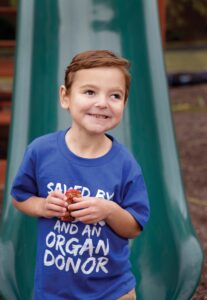
Stephanie Smith can rattle off the milestones that her 4-year-old son, Noah, has experienced since having a lifesaving transplant in January 2021.
The innovative surgery — the first-ever dual kidney/liver transplant to be performed at Monroe Carell Jr. Children’s Hospital at Vanderbilt — not only saved his life but also provided quality of life for the entire Smith family.
“For the first 20 months of his life, he was, we all were, fighting for his survival,” said Smith. “Before transplant, we were taking care of a sick baby around the clock. Long days, longer nights on dialysis with no sleep from constant vomiting.
“And today, he is laughing, running, playing with friends, attending school and involved in sports classes. Noah is now able to live a life that we weren’t guaranteed. They didn’t expect him to make it past delivery.
“We are forever thankful for Noah’s incredible team of specialists who always give him such intentional and incredible care.”
Noah’s medical journey began during Stephanie’s 26th week of pregnancy when an ultrasound detected enlarged kidneys. Further tests led to a diagnosis of autosomal recessive polycystic kidney disease (ARPKD), a rare genetic disorder characterized by fluid-filled kidney cysts.
Affecting 1 in 20,000 children, the disorder often impacts the lungs. About 30% of newborns born with ARPKD die within the first week of life.
Noah was born at 35 weeks gestation via cesarean section.
Within weeks after his birth, he underwent a double nephrectomy and began dialysis. The removal of both of his kidneys allowed his lungs to expand, which made it possible for him to breathe on his own.
After 77 days, he was discharged home to continue the 12-hour nighttime dialysis regime and to work on gaining weight to become eligible for transplant.
During routine monitoring for a liver-related complication of ARPKD, the family was dealt another blow. Imaging showed a liver mass, followed by a biopsy which revealed hepatoblastoma, liver cancer.
Noah completed one round of chemotherapy and was listed for a dual organ transplant. Three days later, the nearly 12-hour surgery was performed.
Noah’s case marks a milestone for the pediatric transplant program and further highlights the culture of collaboration and innovation at Monroe Carell.
“It has been incredibly rewarding to witness Noah’s transformation after transplant,” said Anita Pai, MD, assistant professor of Clinical Pediatric Gastroenterology at Monroe Carell. “It’s remarkable to see his developmental progress during his visits. We continue to collaborate in his long-term care.”
The multidisciplinary team overseeing Noah’s case, which included cancer treatment, transplantation and postoperative and long-term care, created an individualized treatment plan to ensure the best care possible.
It’s been three years since the transplant on Jan. 31, 2021 — dubbed by the family as the “best birthday wish ever.” That date also happens to be the birthday of Noah’s older brother, Peyton, and he had prayed for new organs for his younger brother for months. Now the family celebrates the gift of life for both boys.
“When I think about his journey, it’s overwhelming, honestly. Just the gift of life is so incredible. Look at where we are now,” Smith said.
“We were given a deathly diagnosis when I was pregnant. And now when people come to me with the same diagnosis, I can say that there is still hope. That is what I see when I look at Noah, and I can show them and share our story.”
– by Jessica Pasley
Brooklyn Burney
PERINATAL STROKE
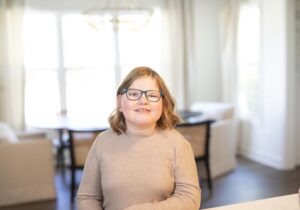
Shortly after Brooklyn Burney was born in 2014, what her parents thought were hiccups turned out to be a perinatal stroke.
Then, on her 1-month birthday, Brooklyn turned blue while nursing. A visit to her on-call pediatrician showed a concerning increase in her head circumference. On their way to Monroe Carell Jr. Children’s Hospital at Vanderbilt from Clarksville, Tennessee, Laura and Justin Burney stopped by their house to make peanut butter and jelly sandwiches. When they left Monroe Carell for the first time a few days later, Laura Burney’s sandwich was still in the back seat.
“Once we arrived at Monroe Carell, things quickly changed: It felt like bam-bam-bam,” Laura said. “The whole care team knew something serious was happening and got her back into triage immediately. We still talk now about how calm everyone was while acting with a sense of urgency.”
A CT with contrast showed that Brooklyn had a bleeding aneurysm.
“We sat there flabbergasted,” Laura said. “We didn’t know babies could have an aneurysm. Brooklyn was looking worse and worse by the minute. She wasn’t crying or reacting to anything. She was deteriorating in front of our eyes.”
Brooklyn had an emergency craniotomy, a five-hour surgery that included removing a piece of her skull, the blood clot, and some of the damaged tissue to allow her brain the extra space to swell and heal. A couple hours later, just as Laura and Justin lay down in the family room, a nurse asked them to return to the PICU.
“They took us into one of those consultation rooms like you see in the movies — the one you never want to be in — and told us that, shortly after we said goodbye, Brooklyn’s heart stopped,” Laura said. “They performed CPR for three minutes and were able to resuscitate her.”
The care team took Brooklyn for another scan to see if the aneurysm ruptured. And that, according to the Burneys, is when “Superman” — or Jay Wellons III, MD, MSPH, Cal Turner Chair and Chief of Pediatric Neurosurgery, came in.
“It was, by far, the scariest conversation we’d ever had,” Laura said. “He walked in, Justin shook his hand and tried to sit back down. Dr. Wellons said, ‘This isn’t a sit-down conversation.’ He said Brooklyn was dying and if we wanted him to save her, he needed to operate immediately. We told him to do whatever was needed.”
Brooklyn recovered well, but her issues continued. When she turned 2, she was diagnosed with myoclonic epilepsy, which caused her body to jerk. Before she turned 3, she was back at Monroe Carell for a hemispherectomy, a brain surgery that disconnects the right side of the brain from the left, performed by Robert Naftel, MD, associate professor of Neurological Surgery. Brooklyn had to learn how to use the left side of her body again and doesn’t have full control of her left hand, but within three months she was off every medication.
“It was, by far, the best decision we ever made, and we are beyond grateful they guided us in that direction,” Justin said. “Even today, there are still things we see her do, and (we) say, ‘Can you believe she just did that?’”
Today Brooklyn is a 9-year-old student with an autobiographical memory who plays piano and takes singing lessons. According to Wellons, she’s full of love for her family, gratitude for everyone at Monroe Carell and mature beyond her years.
“It takes so many people to take care of children like Brooklyn. From the moment they hit the door, there are PICU doctors and nurses, child neurology stroke specialists like Dr. Lori Jordan, the OR team, anesthesia, all that goes into post-op care and rehabilitation. The list goes on and on and on,” Wellons said.
“This is about way more than two surgeons doing their procedures to positively impact her life. It is about a culture of saving children that is inherent here at Monroe Carell. It is what we do. We practice for it. We are ready for it. And seeing Brooklyn living her life with her wonderful family makes it all worthwhile.”
– by Danny Bonvissuto



